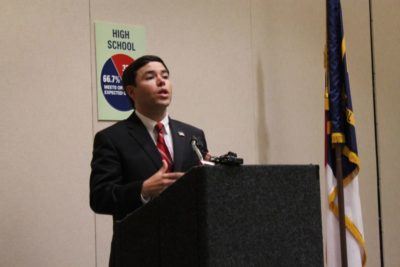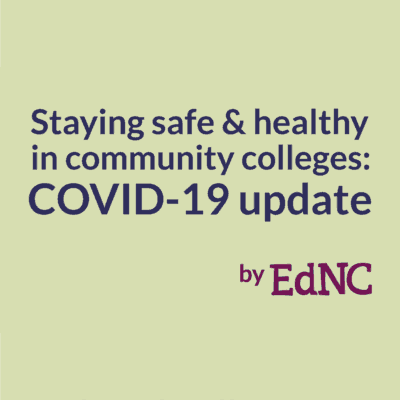The State Board of Education heard a rosier view of the state’s public schools during Thursday’s presentation of the state’s School Performance Grades.
Almost 33 percent of the state’s traditional public and charter schools received As or Bs in 2015-16, up from 30.3 percent last year. And the number of traditional public and charter schools receiving Ds and Fs went down to 23.2 from 27.9 last year. In addition, 92 fewer schools qualified as low-performing, and there are five fewer low-performing school districts.
“I come to you with a big smile on my face,” said Nancy Barbour, director of the state’s District and School Transformation division.
This is the third year of the legislatively mandated School Performance Grades, which are calculated 80 percent on school achievement and 20 percent on academic growth. The grades are on a 15-point scale.
The last release of the grades ended with 581 schools and 15 districts being labeled low-performing. For a district to be labeled low-performing, more than half of the schools must be low-performing. For a school to be labeled low-performing, it must receive a D or F and not exceed academic growth. For 2015-16, there are a total of 489 low-performing schools and 10 low-performing districts. See a full list here.
Nine of the 15 districts labeled low-performing last year moved off the list, however four new districts moved onto the list.
One of the biggest successes touted during the State Board of Education meeting Thursday was the movement of the Halifax County School District off the list of low-performing districts. The district has had consistently underperforming schools for years, and the state has taken an active role in trying to reform the district.
“We are thrilled about the opportunity to have the partnership with Halifax County and see them reap the benefits of their hard work,” Barbour said. “So congratulations to Halifax.”
Results of the School Performance Grades differed between traditional public and charter schools. Traditional public schools had a lower percentage of Ds and Fs (22.9 percent versus 27.7 percent), while charter schools had a higher percentage of As and Bs (39.9 percent versus 32.2 percent.)
Breaking the numbers down further, public schools had 6.6 percent As, which includes the designation A+NG — reserved for schools that get an A and don’t have a “significant achievement and/or graduation” gap. Meanwhile, charter schools had 10.9 percent.
Here is the breakdown of the grades.
Traditional Public Schools
- A: 6.6 percent
- B: 25.6 percent
- C: 44.9 percent
- D: 19.1 percent
- F: 3.8 percent
Charter Schools
- A: 10.9 percent
- B: 29 percent
- C: 32.3 percent
- D: 18.7 percent
- F: 9 percent
Low-income schools continue to make up the majority of schools receiving Ds and Fs in traditional public schools. Schools with 50 percent or more poverty make up 91.9 percent of D schools and 98 percent of F schools.
“Impoverished schools across North Carolina, they have many more challenges,” said state Superintendent June Atkinson during a press conference.
She went on to say that the School Performance Grades are just a snapshot, but that impoverished schools have additional needs, like social workers, school psychologists, and just extra adults on hand.
Also released Thursday were the school participation rates for all state assessments. Eighty-seven percent of schools met all participation requirements. However, the federal government requires that percentage to be 95 percent. Atkinson was asked during the press conference if she was worried that would threaten federal funding to North Carolina. She called up Tammy Howard, director of accountability services at the Department of Public Instruction, to get into the specifics of participation.
Howard said that after the federal government sent a warning letter about the participation rates last year, DPI agreed to take actions with the schools that aren’t meeting requirements. She said that system is in place. She also said that while a number of schools didn’t meet all participation requirements, they were meeting some.
The State Board of Education also heard the latest on the state’s graduation rates. It has reached an all-time high of 85.8 percent.
Atkinson also said graduation rates among African Americans, Hispanics, and economically disadvantaged students are improving as well.
Go here to see the press release about the School Performance Grades.
Go here to see a full list of the School Performance Grades released at Thursday’s State Board of Education meeting.
Go here to see a press release about the graduation rate.
See a video of the press conference below.
Recommended reading




